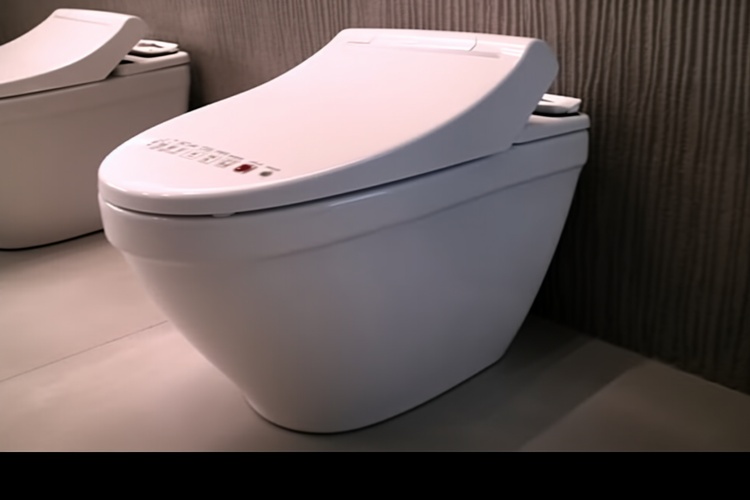The Wonders of Japanese Toilets: Revolutionizing Bathroom Comfort
Japanese toilets have gained worldwide recognition for their innovative features and unparalleled comfort. These high-tech marvels, often referred to as smart toilets or washlets, have transformed the bathroom experience for millions of users. From heated seats to personalized cleansing options, Japanese toilets offer a level of luxury and hygiene that traditional toilets simply can't match. Let's explore the fascinating world of Japanese toilets and discover why they're becoming increasingly popular around the globe.

-
Bidet functionality: Japanese toilets typically incorporate a built-in bidet system, which uses a gentle stream of water for cleansing after use. This feature eliminates or reduces the need for toilet paper, promoting better hygiene and environmental sustainability.
-
Heated seats: Many Japanese toilets boast heated seats, ensuring a comfortable experience even during colder months. Users can often adjust the temperature to their liking, adding an extra layer of personalization.
-
Automatic functions: From lid opening and closing to automatic flushing, these toilets minimize the need for physical contact, enhancing hygiene and convenience.
-
Customizable settings: Japanese toilets often allow users to adjust water pressure, temperature, and spray patterns for the bidet function, catering to individual preferences and needs.
How do Japanese toilets improve bathroom hygiene?
The focus on cleanliness and hygiene is a cornerstone of Japanese toilet design. These smart toilets contribute to improved bathroom hygiene in several ways:
-
Hands-free operation: Many Japanese toilets feature motion sensors for automatic flushing and lid opening/closing, reducing the spread of germs through touch.
-
Self-cleaning nozzles: The bidet nozzles on Japanese toilets are typically self-cleaning, using antibacterial solutions to maintain hygiene between uses.
-
Deodorizing systems: Built-in air purification systems help eliminate unpleasant odors, keeping the bathroom fresh and clean.
-
Easy-to-clean surfaces: Many Japanese toilets are designed with smooth, non-porous surfaces that resist staining and bacterial growth, making them easier to clean and maintain.
What are the environmental benefits of Japanese toilets?
Japanese toilets offer several environmental advantages over traditional toilets:
-
Reduced paper usage: The bidet functionality significantly reduces or eliminates the need for toilet paper, helping to conserve trees and reduce paper waste.
-
Water conservation: Despite their advanced features, many Japanese toilets are designed to be water-efficient. Some models use dual-flush systems or have eco-friendly modes that minimize water consumption.
-
Energy efficiency: While Japanese toilets do require electricity to operate, many models are designed with energy-saving features, such as timers and sleep modes, to reduce power consumption when not in use.
-
Durability: High-quality Japanese toilets are built to last, reducing the need for frequent replacements and minimizing waste associated with toilet manufacturing and disposal.
Are Japanese toilets suitable for all bathrooms?
While Japanese toilets offer numerous benefits, there are some considerations to keep in mind when deciding if they’re suitable for your bathroom:
-
Space requirements: Some Japanese toilet models may be larger than traditional toilets, so it’s essential to ensure your bathroom has adequate space to accommodate them.
-
Electrical needs: Most Japanese toilets require a nearby electrical outlet to power their advanced features. This may necessitate some bathroom modifications if an outlet isn’t already present near the toilet area.
-
Plumbing compatibility: While many Japanese toilets can be installed with existing plumbing, some models may require additional plumbing work to ensure proper functionality.
-
Cost considerations: Japanese toilets are generally more expensive than traditional toilets due to their advanced features. However, many users find the long-term benefits outweigh the initial investment.
How much do Japanese toilets cost?
Japanese toilets come in a wide range of models with varying features and price points. Here’s a general overview of what you can expect to pay for different types of Japanese toilets:
| Product Type | Brand | Cost Estimation |
|---|---|---|
| Basic Washlet | TOTO | $300 - $600 |
| Mid-range Smart Toilet | Brondell | $600 - $1,000 |
| High-end Integrated Toilet | TOTO Neorest | $2,000 - $5,000+ |
| Luxury Smart Toilet | Kohler Veil | $3,000 - $7,000+ |
Prices, rates, or cost estimates mentioned in this article are based on the latest available information but may change over time. Independent research is advised before making financial decisions.
Are Japanese toilets worth the investment?
For many users, Japanese toilets are well worth the investment due to their numerous benefits:
-
Enhanced comfort: Features like heated seats, customizable bidet functions, and automatic operations significantly improve the overall bathroom experience.
-
Improved hygiene: The hands-free operation and thorough cleansing capabilities contribute to better personal and bathroom hygiene.
-
Accessibility: For individuals with mobility issues or certain health conditions, the bidet functionality and automatic features can greatly improve independence and comfort.
-
Long-term savings: While the initial cost may be higher, reduced toilet paper usage and potential water savings can lead to long-term cost benefits.
-
Environmental impact: The reduction in paper usage and water conservation features align with eco-friendly practices.
Japanese toilets have revolutionized the bathroom experience, offering a perfect blend of comfort, hygiene, and technology. As these innovative fixtures become more widely available and accepted globally, they continue to set new standards for what we expect from our bathrooms. Whether you’re looking to upgrade your home bathroom or seeking ways to improve hygiene and comfort, a Japanese toilet could be the perfect solution to elevate your daily routine.






